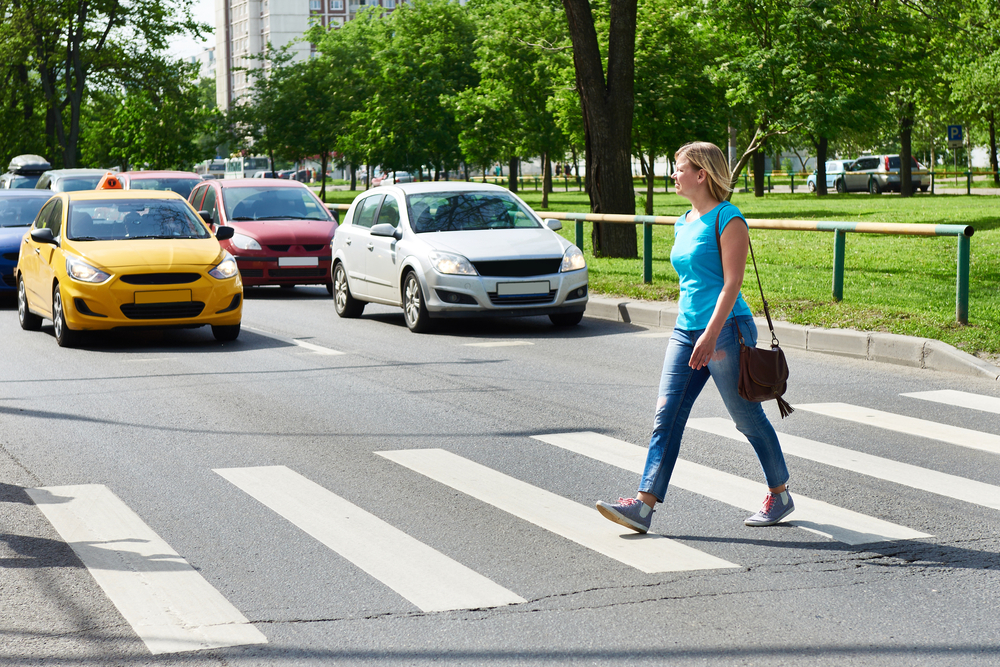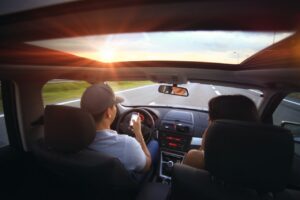Ohio Pedestrian deaths due to auto accidents are on the rise. According to Ohio State Highway Patrol, the number of pedestrians killed in 2017 was 145, in comparison to only 93 in 2014 and 118 in 2015.
CAUSES OF PEDESTRIAN DEATHS
1. Smartphone Use by Drivers and Pedestrians
Increasingly, smartphone use is a contributing factor in car crashes. A Distracted Driving Behavior Study published in early 2017 shows that drivers use cell phones in 88% of their trips The study analyzed cell phone use by 3.1 million anonymous drivers over 570-million trips.
Drivers aren’t the only ones being distracted by cell phones. Pedestrians also use cell phones in ways that lead to injuries. Studies of emergency room visits indicate that pedestrian injuries related to cell phone use are on the rise.
2. Driving or Walking While Intoxicated
Drinking alcohol or using drugs before getting on the roads impairs judgment, slows reaction times, and interferes with coordination. These negative effects apply equally to vehicle drivers, bicycle riders and pedestrians. Ohio pedestrian accident data from 2010-2016 shows, a high percentage of pedestrian fatalities involved alcohol use by either the vehicle driver or the pedestrian.
3. Driving Too Fast for Conditions
Speeding cars are one of the biggest risks for pedestrians. The faster a car travels, the less time a driver has to perceive and react to changes in traffic. Also, higher car speeds lead to higher rates of pedestrian fatalities. Some studies show that a pedestrian hit by a car going 20 mph has a 10% likelihood of death. A car moving 40 mph raises the pedestrian’s chance of death to 80%.
4. Jaywalking
Drivers expect pedestrians at intersections and marked crosswalks. They don’t expect walkers and joggers to dart out from between cars or to be in the road mid-block. Pedestrians who disobey laws about where to cross streets are at high risk of being struck by a vehicle.
5. Pedestrians wearing dark clothing at night
Pedestrians are harder to see at dusk or in the dark. Safety experts tell pedestrians to wear light-colored or reflective clothing at night. Putting reflective tape on clothing, shoes or backpacks and carrying a light are additional ways pedestrians can be more visible.
PEDESTRIAN SAFETY
Experts recommend that you do the following when crossing the street to avoid being hit:
- Cross the street at designated crosswalks or intersections. Make sure that you use crossing signals and pay attention to when the signals tell you to walk or not walk.
- Avoid jaywalking (crossing the street, not at a designated crosswalk.). If you must cross the street, not at a crosswalk, YOU must wait for traffic to pass before crossing the street.
- Increase your visibility at night by a carrying a flashlight. You can also wear reflective clothing. Avoid wearing dark clothes at night if you’re planning to walk. Try wearing brightly-colored clothing during the day.
- Cross the street and walk in well-lit areas.
- If possible, make eye contact with drivers in stopped vehicles to ensure they see you before you cross in front of them.
- Avoid distractions, such as looking at your phone when walking or crossing a street. Be aware of your surroundings.
- It is always safest to walk on a sidewalk. If there is no sidewalk, walk on the shoulder and face oncoming traffic. It is against the law to walk on interstate highways.
How a Ohio Personal Injury Lawyer Can Help
We take your injuries personally. That is why we handle every aspect of every case, to ensure you receive maximum compensation for your injuries. We will investigate the accident and gather the evidence and testimony needed to make a strong damage claim.
Call Wright & Schulte at 937-222-7477 or use the convenient online contact form to schedule a free consultation and learn how we can help you. You will be under no obligation and you will never pay any money unless we recover compensation for your losses.



